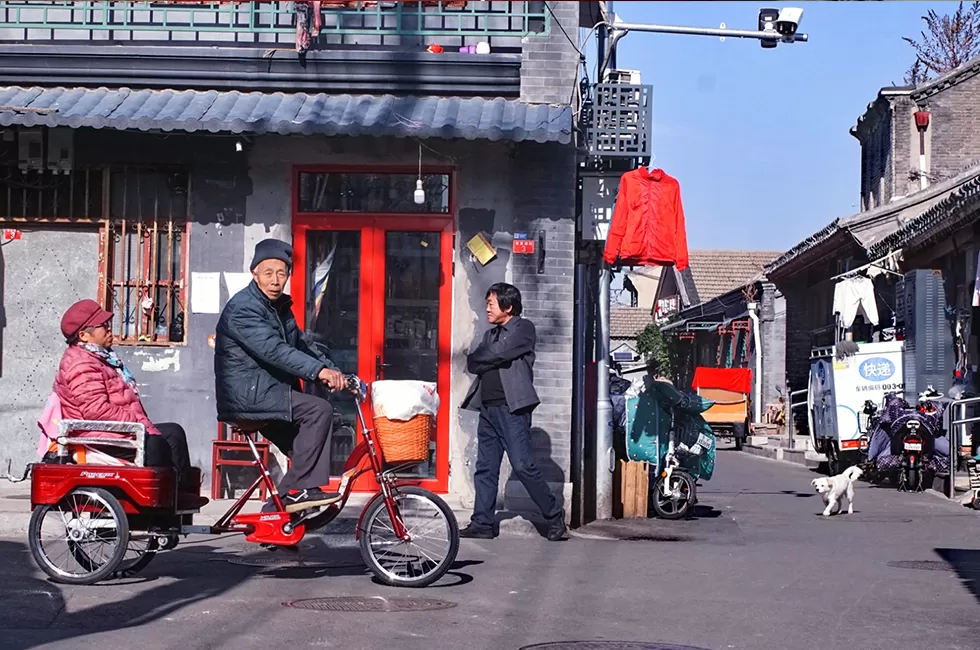Hutongs
- Name: all day/中文
- Open hours: all day
- Entrace fee: free
- Tour time: 1.5-2 hours
- Where:asdfasdfasdf/中文
How to get there
Xi'an Chengnan(South) Bus Station - Huxian County, then find a bus/taxi to the Donghan Peasant Painting Village
What to see and to do
How many Hutongs in Beijing and which one is the best choice to visit?
Tips
The term “hutong” (hútòng) originally means “water wells” in the Mongolian language. A hutong is a typical narrow alley or street in Beijing, China. They are formed by Siheyuan (traditional compounds with houses around a courtyard). The hutongs surrounding the Forbidden City were mostly built during the Yuan (1206-1341), Ming (1368-1628) and Qing (1644-1908) Dynasties. High-ranking officials and wealthy businessmen lived in these hutongs, which is the reason that many hutongs we see today feature exquisite design. Hutongs are residential neighborhoods that form the heart of Beijing, and thus represent important cultural elements.
 Tradtional Chinese Courtyard
Tradtional Chinese CourtyardThere were 900 documented hutongs inside the city and 300 in the outskirts during the Ming Dynasty. They were developed into 1,800 in the Qing Dynasty and a further 1,000 were formed in the early 20th century. According to statistics, upon the founding of the People's Republic of China, there were 2550 hutongs. There has been both some demolition and rebuilding following China’s reform and opening up, and there now remain about 4,000 hutongs. Among them, Zhuanta (Pagoda) Hutong, formed in the Yuan Dynasty, has the longest history. The only existing bridge gallery is Guanyinyuan (Mercy Buddha Temple) Arcade.
Hutongs vary a great deal. The longest is Dongjiaominxiang, about 3 miles (4.8 km) and the shortest is Yichidaxie, only 25.2 meters long. The widest, Lingjing, is 32.18 meters whilst the narrowest, Xiaolabakou, (small pipe socket) is only 0.6 meter wide. Interestingly, Qiuwan (9-Corner) Hutong has the most corners, but actually, there are far more than 9 corners.
The main buildings in the hutongs were almost all quadrangles, a building compound formed by four houses on four sides around a quadrangular courtyard. The quadrangles varied in size and design according to the social status of the residents.
Every hutong has a name. The naming of hutongs can also reflect local customs. A hutong can be named according to symbols (e.g. Stone Tiger Hutong), names of places (e.g. Yindian Bridge Hutong), and names of trees (e.g. Willow Tree Hutong), directions and names of the residents, and so on.
Despite their long history, many of the hutongs were destroyed or deteriorated due to war and development. However, after the founding of the People’s Republic of China in 1949, the conditions of hutongs have been improved. More recently many hutongs have been replaced by modern highways and buildings. The remaining hutongs are very attractive to foreign tourists. They can experience the “old” Beijng in the New Beijing.
Welcome to the Hutong – centuries-old, tree-lined alleyways that are full of ancient beliefs. Rub shoulders with high-rise buildings and luxurious shopping malls, these alleys are the true heartbeat of Beijing and a real-life link to its captivating past. Follow our guide deeper into the Hutong, where the influence of modern city recedes, and find a slice of old Beijing there.
What we can cultural experience in Hutong?
- You can learn paper cutting, Chinese calligraphy, Chinese painting, dumpling making with locals, Cooking, Chinese kite making, Sugar painting, Peking Opera mask painting, etc. in Hutong; View details about Hutong experiences >>
GREAT FAMILY CHINA TOUR
JULY 2024 We wanted to thank Grace at China Culture tour for organizing a great tour of China. We enjoyed our Beijing - Xian-Chengdu -Guilin -Yangshuo - Shanghai trip. Our local guides Bruce in Beijing, Susan in Xian, Jane in Chengdu, Mike in Guilin and Mary in Shanghai took care of us…read more details »
Teng Han L from SINGAPORE
Ready to Create a Unique Dream Travel?

